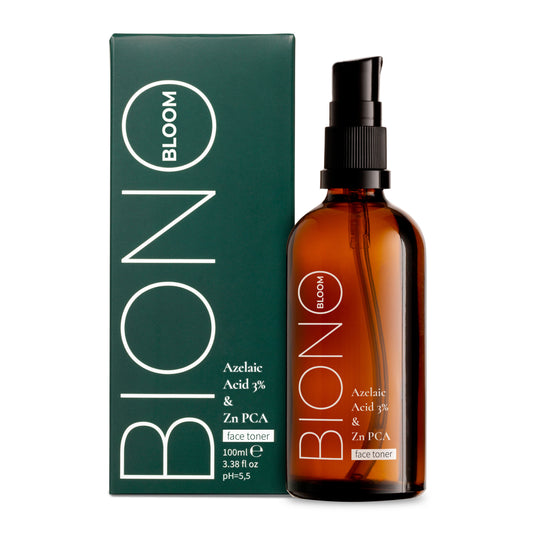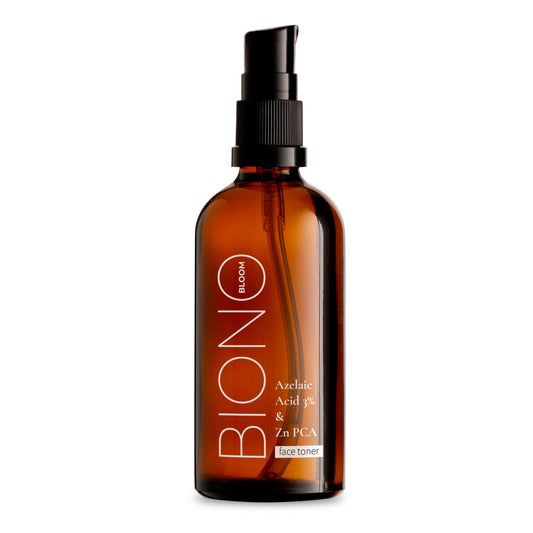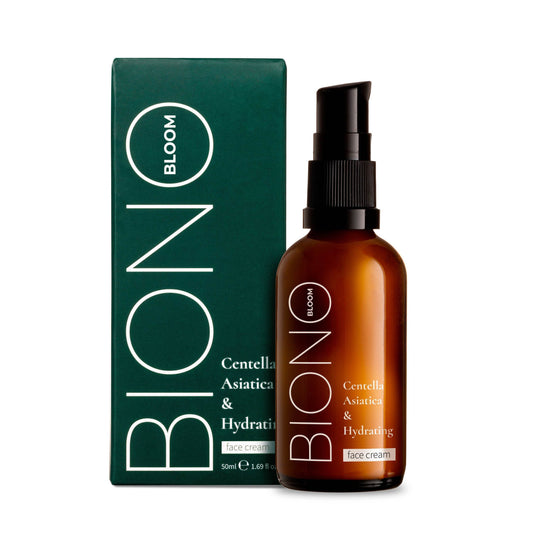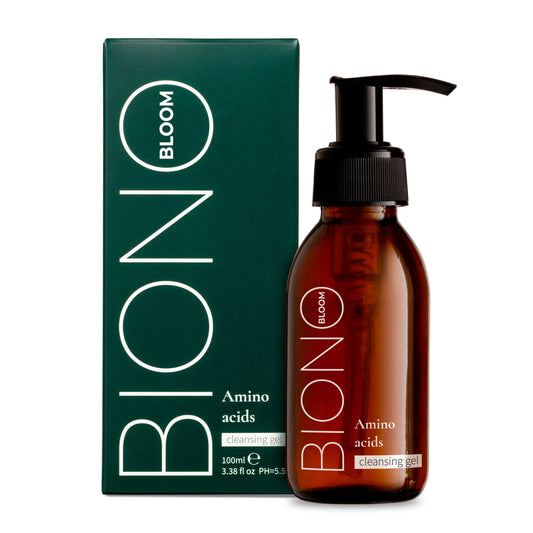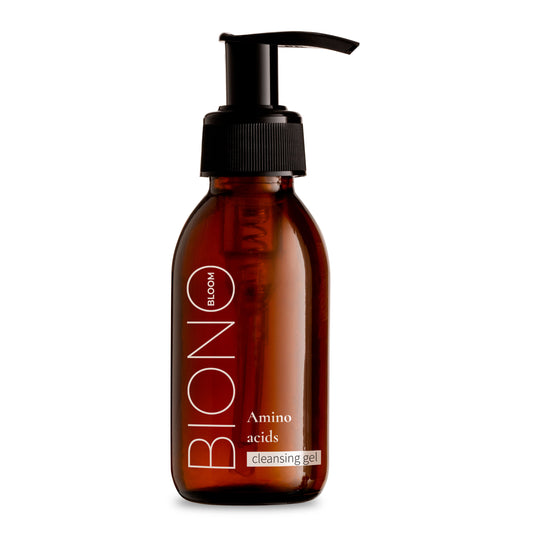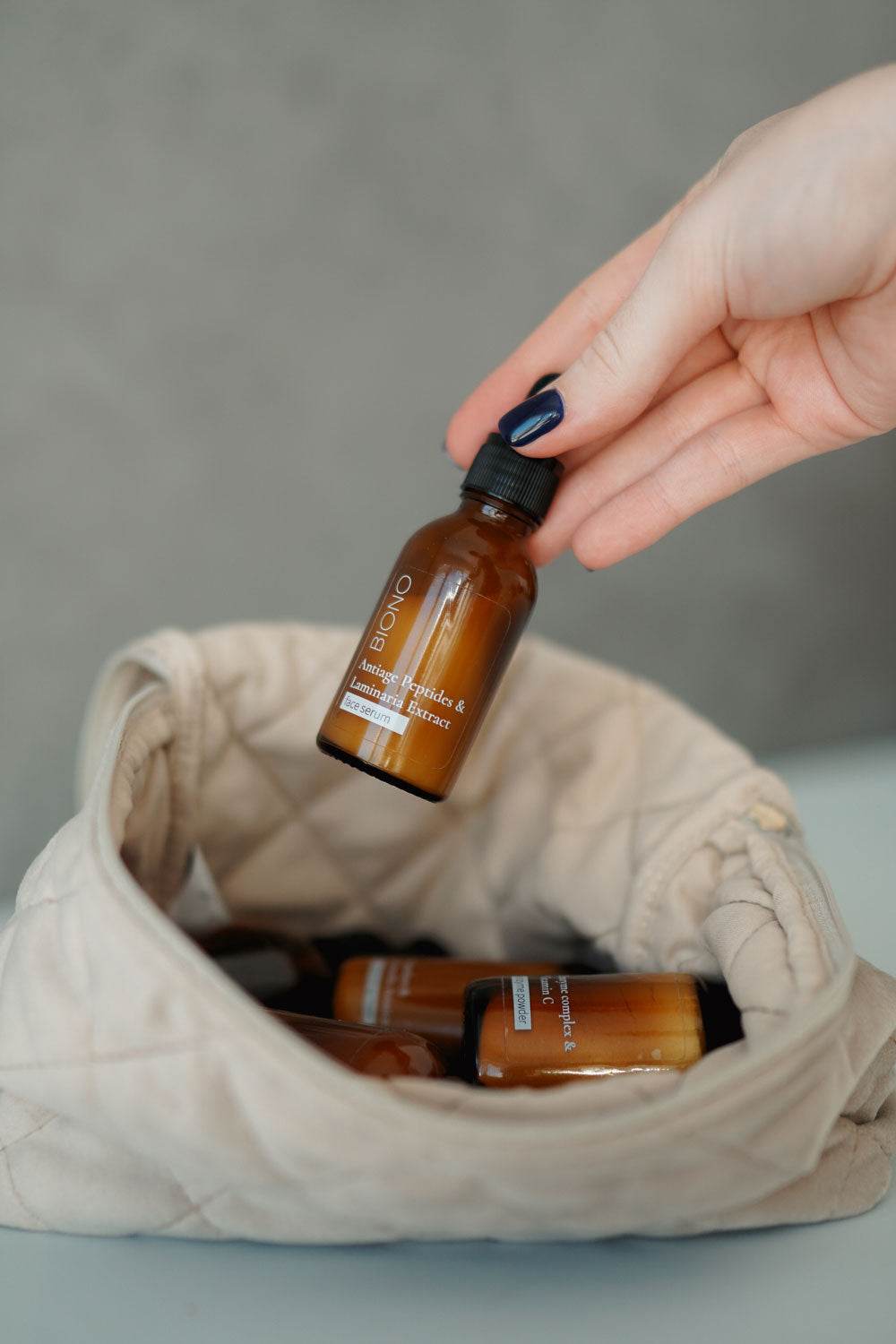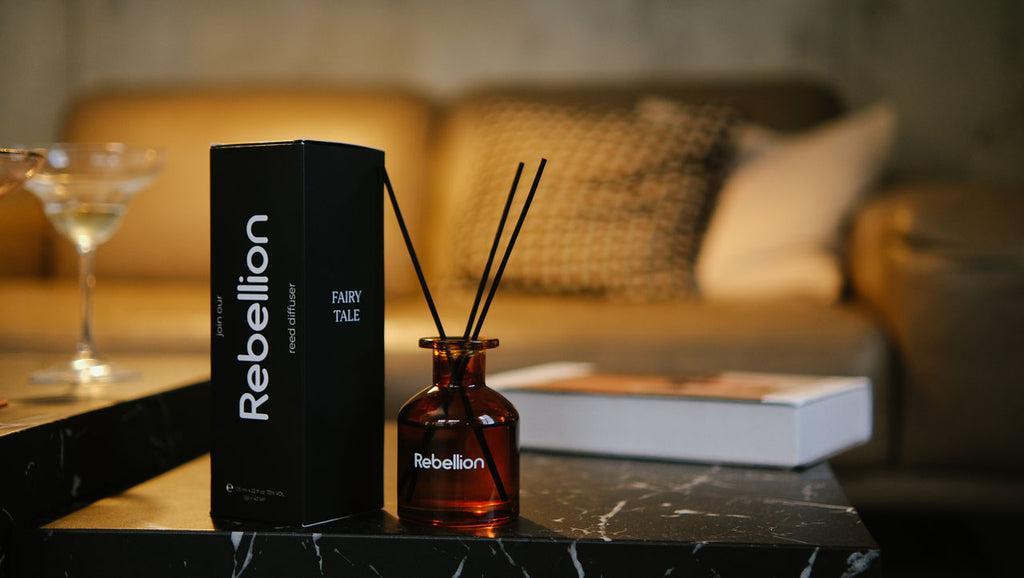
Toner vs tonic: what's the difference and what to choose?
Share
The word "toner" has been around since our mothers' days, and "toner" has been taking over store shelves in the last decade. Both products are often found side by side, have a similar consistency, and it's easy to get confused. Are they the same? Is it worth choosing something specific? In this blog, we'll break down the difference between toner and toner, how to use them correctly, and which one is right for you.
What is facial tonic?
A facial toner is a light, watery product used after cleansing. Its main function is to remove any residue from cleanser, cleansing oil, or makeup that may have remained on the face after the first cleansing step. In traditional skincare, toner is considered the final touch to the cleansing process.
One of the key functions of a toner is to restore the skin's natural pH. Many foams and gels have an alkaline environment, which can disrupt the skin's acidic barrier. Toner helps quickly neutralize these changes, supporting the skin's barrier function. It can also minimize pores and leave a feeling of freshness and light tone.
Toners often contain alcohol (in classic versions), witch hazel, mint, cucumber, aloe, floral waters, and various extracts. However, the role of toners in modern skincare is gradually changing. More and more brands are abandoning alcohol-based formulas, replacing them with more gentle, moisturizing, and soothing alternatives. So, toners aren't disappearing; they're becoming more tailored to the needs of sensitive or problematic skin.

What is toner and where does it come from?
Toner is a lightweight skincare product that became popular thanks to the Korean multi-level skincare system. It was from Asian beauty rituals that the understanding came that toner is not just a "wash after cleansing," but the first moisturizing step that prepares the skin for subsequent active products, such as essences, serums, or creams.
The main function of a toner is to moisturize the skin and make it more receptive to subsequent skincare steps. A toner acts as a kind of medium, helping active ingredients penetrate deeper, ensuring maximum effectiveness. If skin feels tight or dull after cleansing, a few drops of toner instantly restore moisture balance and provide a feeling of comfort.
Today, toners are divided into several types, each with its own specific purpose. Moisturizing toners with hyaluronic acid or beta-glucan are ideal for dry and sensitive skin. Acid toners—with AHA, BHA, or PHA—gently exfoliate and renew the skin, suitable for oily or dull skin. Anti-aging toners contain peptides, antioxidants, or collagen, which promote firmness and radiance. This flexibility has made toners a must-have for those who want maximum results without the hassle.
The main differences between toner and tonic
Despite their similar names, toners and toners are not the same. The main difference between them lies in their ingredients. Toners often have an alcohol base or astringent ingredients, which are designed to cleanse and tone the skin after cleansing. They can dry out the skin, so they are better suited to oily skin types or as an additional step after makeup removal.
In toners, the emphasis shifts to active and moisturizing ingredients: hyaluronic acid, peptides, plant extracts, and antioxidants. They don't cleanse, but they saturate the skin with moisture, soothe, and prepare it for further care—acting as the first step in active moisturizing.
As for texture, toner is typically watery and light, while toner can be slightly thicker, gel-like, or silky. This makes toner more pleasant to apply, especially if applied by hand.
And finally, how to apply it. Toner is most often applied with a cotton pad, using light wiping motions. This helps remove any remaining cosmetics, sebum, or limescale from the water. Toner, on the other hand, is best applied with your hands, pressing into the skin with light motions to maximize hydration without losing the active ingredients on the pad.
The result is two products with completely different approaches: a toner completes cleansing, and a toner begins skincare. The choice depends not only on your skin type but also on what exactly you expect from your skincare routine.

Toner and tonic: what is the difference in composition and texture?
One of the main differences between toners and toners is their ingredients. Toners, especially the classic variety, often contain alcohol or other astringent ingredients that effectively remove excess sebum, tighten pores, and refresh the skin. However, these may be too harsh for sensitive or dry skin.
Toners, on the other hand, are created as moisturizing and conditioning products. They typically don't contain alcohol, but instead contain beneficial active ingredients: hyaluronic acid, niacinamide, panthenol, plant extracts, antioxidants, etc. Such formulas not only nourish the skin but also help enhance the effects of subsequent steps in the routine.
As for texture, toners are usually completely watery, like plain water. Toners, on the other hand, can have a slightly thicker consistency, sometimes even a slightly gel-like consistency. This makes them more pleasant to the touch and allows them to absorb more slowly, infusing the skin with moisture.
How to apply: cotton pad or hands?
Another difference between these two products is the application method. Toner is traditionally applied with a cotton pad to remove any remaining impurities and provide a light cleansing effect. This method is ideal for oily skin or after using heavy cosmetics.
Toner is most often applied with your hands, like essence or serum. A few drops of the product are spread on your hands and gently pressed into the skin. This not only feels good but also reduces product waste—none is left on the cotton pad.
In this way, the approach to using each product reflects its intended purpose. Toner cleanses, while toner nourishes. This is the main difference worth considering when choosing.
How to choose: toner or toner for your skin type
To avoid making a mistake when choosing between toner and toner, consider your skin type and current needs. Both products can be effective, but only if used correctly.
For oily or problematic skin, a toner is usually better, especially one containing sebum-regulating ingredients like salicylic acid, zinc, and witch hazel. Such a product will help tighten pores, reduce shine, and prevent breakouts. However, avoid overly aggressive alcohol-based toners, as they can dry out the skin and cause even more oiliness.
A toner is the perfect choice for dry and sensitive skin. It gently moisturizes, soothes irritations, and eliminates tightness. Look for ingredients like hyaluronic acid, beta-glucan, panthenol, aloe, or niacinamide—these ingredients gently nourish the skin without causing irritation.
In some cases, toner and toner can be used together, but not simultaneously. For example, in your evening after-makeup routine, toner will help complete your cleansing routine, and you can then apply toner to moisturize. In the morning, you can limit yourself to just toner—it will quickly refresh and awaken your skin, preparing it for your day cream or SPF.
Follow your instincts: skin should feel soft, without tightness or a greasy sheen. This is when the right product is chosen. And remember, skincare isn't a template, but a flexible system that can be customized to your needs.
Can I use both toner and tonic together?
Choosing between toner and toner may seem like choosing between two. But in reality, you can combine them if you properly understand the functions of each product. Sometimes this approach is even more effective than using just one product.
Combining them makes sense when your skin needs both extra cleansing and deep hydration. For example, if you wear heavy makeup or live in a city with heavy air pollution, a toner will help completely remove all residue from cleansing. A toner, in turn, will restore moisture balance and prepare your skin for active care.
In a basic daily routine it might look like this:
- Washing (gel or foam)
- Tonic (with a cotton pad) - for cleansing and restoring pH
- Toner (with hands) - to moisturize and soften
- Serum, cream or SPF - depending on the time of day
The most important thing is not to overload your skin and choose products according to its type. If it's oily, prefer a light toner and a moisturizing oil-free toner. If it's dry, the toner can be mild or even optional, and the toner will become a must-have.
When combined correctly, toner and tonic do not conflict, but on the contrary, they complement each other, creating a harmonious care duo.
Toner and toner. Summary.
Toner and toner are not synonymous, but two distinct steps in skincare. Toner completes cleansing, helps remove cosmetic residue, and restores the acid-alkaline balance. Toner, on the other hand, begins active skincare, moisturizing the skin, softening it, and preparing it for the application of serums or creams.
When choosing between them, consider your skin type, individual needs, and the time of day. A toner and toner combination might be appropriate in the evening, while a toner-only moisturizer might be appropriate in the morning. One product doesn't replace the other, but both can work in tandem if combined correctly.
Most importantly, listen to your skin. It will tell you when it needs cleansing and when it needs attention. And then proper skincare will become not just a routine, but a pleasant ritual that gives you a healthy glow and comfort every day.

